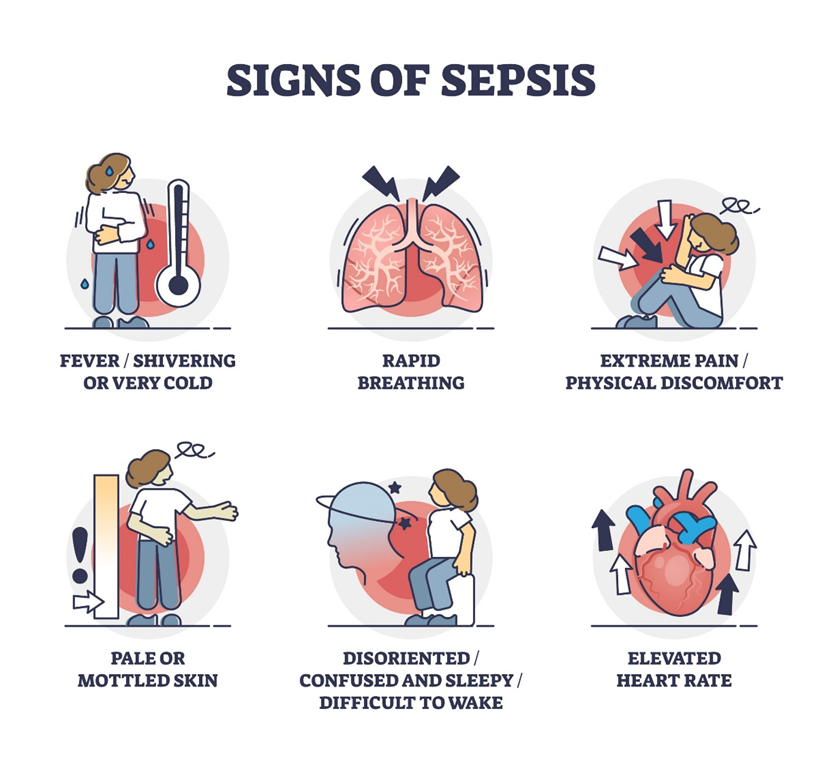The nurse recognizes that a patient with sepsis is at risk to develop hypotension. Which pathophysiological process is responsible for this symptom?
Vasodilation and fluid shift out of the vascular space
Platelet aggregation and thrombus formation
Decreased blood glucose and oliguria
Hypoxemia and anaerobic metabolism
The Correct Answer is A
Choice A reason: In sepsis, inflammatory mediators cause vasodilation and increased capillary permeability, leading to fluid leaking out of the vascular space, resulting in hypotension.
Choice B reason: Platelet aggregation and thrombus formation can occur in sepsis but are more related to disseminated intravascular coagulation (DIC) rather than directly causing hypotension.
Choice C reason: Decreased blood glucose and oliguria can be consequences of sepsis but are not the primary pathophysiological processes responsible for hypotension.
Choice D reason: Hypoxemia and anaerobic metabolism may result from the effects of sepsis on the body, including hypotension, but they are not the direct cause of hypotension.
Nursing Test Bank
Naxlex Comprehensive Predictor Exams
Related Questions
Correct Answer is B
Explanation
Choice A reason: Impaired elimination may be a concern with pancreatitis due to potential complications affecting the gastrointestinal tract, but it is not the immediate priority.
Choice B reason: Fluid imbalance is the most critical issue in acute pancreatitis, as evidenced by inelastic skin turgor and concentrated urine, indicating dehydration, which can exacerbate the condition and lead to hypovolemic shock.
Choice C reason: Fever may be present due to inflammation or infection, but the temperature provided is not indicative of a significant fever and is not the priority over fluid imbalance.
Choice D reason: Nausea is a symptom of acute pancreatitis and while it needs to be managed, it is not the priority over fluid imbalance.
Correct Answer is ["A","C","D"]
Explanation
Choice A reason: Monitoring platelet count is important in sepsis as thrombocytopenia can occur due to disseminated intravascular coagulation (DIC).
Choice B reason: Urine specific gravity is not typically monitored for sepsis unless there is a concern for renal function or fluid balance.
Choice C reason: Lactate levels are monitored in sepsis to assess the severity of septic shock and tissue hypoperfusion.
Choice D reason: PaO2 is monitored to assess oxygenation status, which can be compromised in sepsis due to respiratory dysfunction.
Choice E reason: Serum ammonia is not typically monitored for sepsis unless there is a concern for hepatic function or encephalopathy.

Whether you are a student looking to ace your exams or a practicing nurse seeking to enhance your expertise , our nursing education contents will empower you with the confidence and competence to make a difference in the lives of patients and become a respected leader in the healthcare field.
Visit Naxlex, invest in your future and unlock endless possibilities with our unparalleled nursing education contents today
Report Wrong Answer on the Current Question
Do you disagree with the answer? If yes, what is your expected answer? Explain.
Kindly be descriptive with the issue you are facing.
